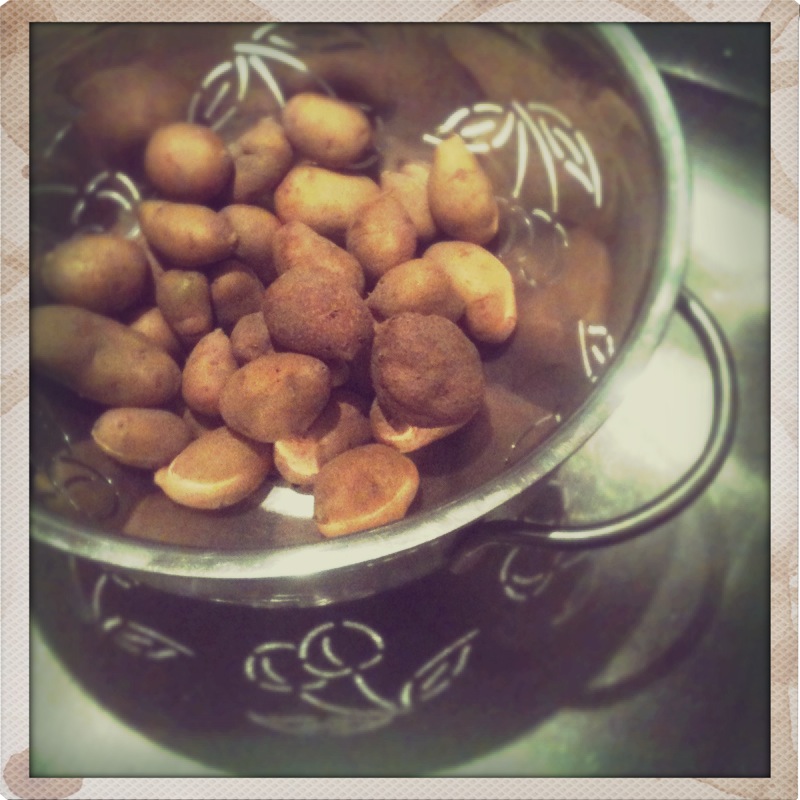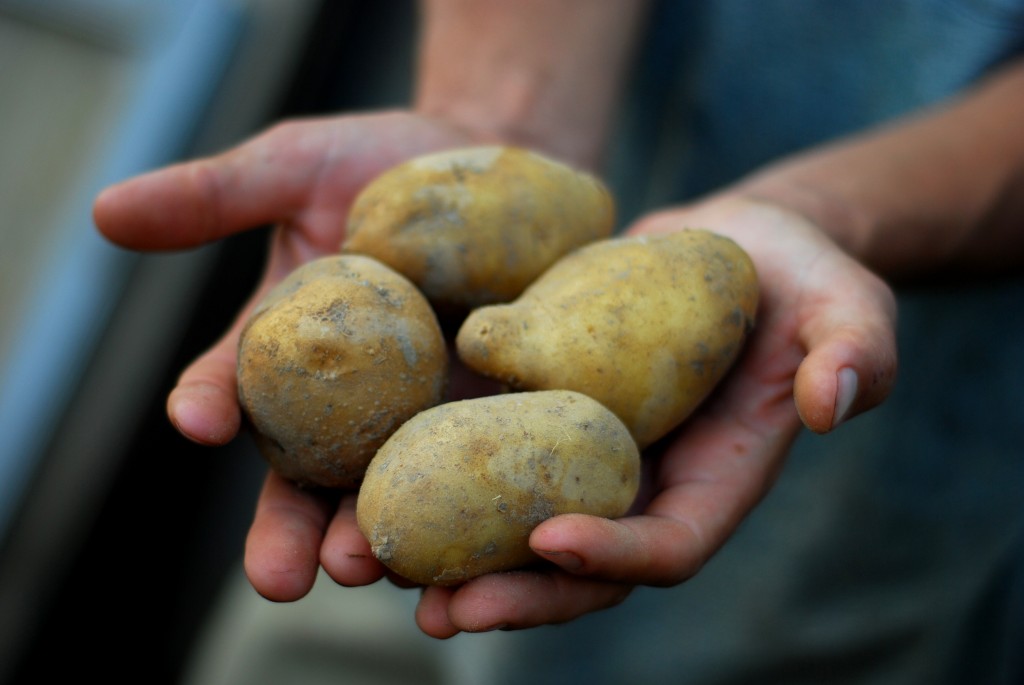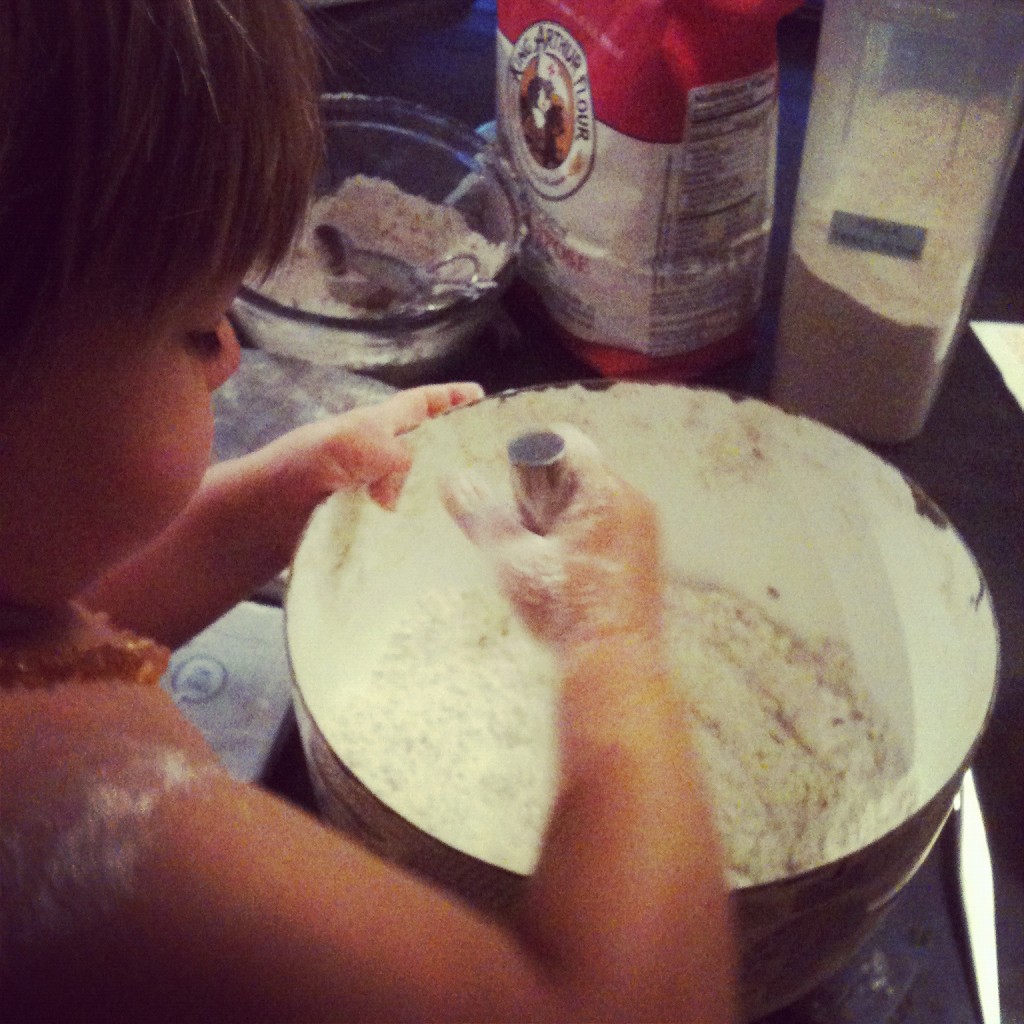Today we’re so pleased to introduce a new contributor, Julia Timmons. Julia is a longtime Southside Virginia resident and newly retired after 30 years of teaching. One of the things she enjoys doing with her newfound free time is canning – a skill she learned as a child, working alongside her mother to put up food from her father’s big vegetable garden. Read more about this, and about the long line of canners in Julia’s family, in today’s post.
This is also the first in what we hope will be a series of posts about our childhood kitchens. Thanks for getting us started, Julia!
When I was 10 years old my parents purchased a 55-acre farm in Bedford County, just above the Otter River and bisected by Lick Run Creek. My brother came up with the idea of naming the farm Otter Lick Farm and proceeded to draw and paint a sign for the mailbox depicting an otter with his tongue sticking out! Our first year of owning the farm we were not able to move – we had had plans to move my grandfather with us and his health suddenly took a turn for the worse, postponing our move for a year. In the meantime through my uncle we had a Vietnamese family rent the farmhouse. The house was built somewhere around 1940 and needed considerable work. There were two occasions when the tenants called my dad in a panic over problems. The first, their young son fell down the steps in and doing so put his foot through the 1/8-inch thick old sheetrock. No worries there! The second call was that there was snow in the living room. Dad went out and found that the wind was blowing so hard and gaining just the right momentum and path that it was blowing through under the house foundation, up into the newel post and into the living room. Needless to say, we had to do much renovation to put in insulation and “new age” sheetrock, improve the kitchen, convert the small enclosed porch into laundry, sewing and bathroom, and most fun of all, cover and screen the huge concrete slab attached to the back of the house. It was here that I remember fondly so many family gatherings! At our farm, the wind rarely stopped blowing. We did not have air conditioning and that breeze through the huge oak trees in the front yard on a sweltering night or through the screened porch on a humid and hot afternoon was always welcome.
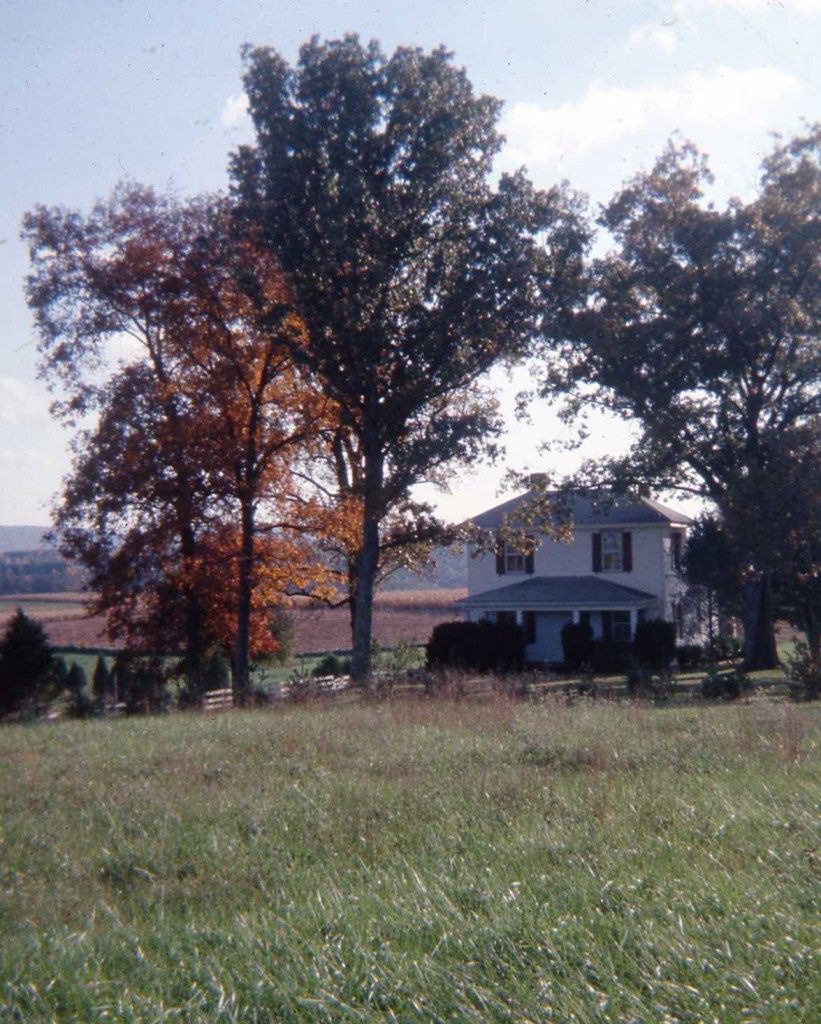
Soon after we moved, my father proceeded to plant a large garden. My recollection is that it was about half an acre. Along one edge we planted a grove of dwarf fruit trees – Red Delicious apples, Golden Delicious apples, peaches, and damson plums. Between the three long sections of the garden, Dad planted lespedeza bushes to attract birds which would hopefully help with pests. I remember goldfinches and indigo buntings flying in and out of them all summer. Our crops of choice included tomatoes, corn, green beans (bush), butter beans (pole), peas, peppers, potatoes, onions, cucumbers and squash. We also dabbled in some other things like strawberries, asparagus, snow peas, gourds and pumpkins. We tried our best to organic garden – purchased both praying mantis and ladybugs (true ones, not the nasty pest ones we have now). We contacted the extension agent for advice. At times this worked, and at others we had to dust and spray to keep the crops alive and producing. Water came from the spring house, whose flow Dad had to monitor carefully after burning out the holding tank pump. There was plenty of water all the time, just not at a huge rate of flow.
Between the house and the garden were two full sized “antique” apple trees, the apples from which were only good for cooking. It was under these trees where Dad placed a metal rocker in which he sat to take his gardening breaks and drink coffee. What escaped me was how in the world he could DRINK a boiling hot beverage on a 95-degree day. When asked, he said it cooled him off (can you tell I am NOT a coffee drinker)? The farm came with an old yellow cub tractor which dad worked on and got into shape to till, plow and work the soil. Being in Bedford County, the soil was red, clay and full of rocks. Many times I remember rock picking, as each year in the spring when we tilled garden to plant, or turned the plants under in the fall, more rocks surfaced. I swear to you we were growing a crop of them!!
As a result of such a large family garden, there was always plenty to be done from spring until late fall. Dad did most of the planting, weeding and some of the picking, while Mom and I took over from there and did all the preserving (we picked as well and occasionally planted, and EVERYONE weeded from time to time). So many afternoons we sat on that breezy screened porch with the dogs at our feet, shucking corn, snapping beans, shelling peas and limas. My maternal grandmother lived with us during the early years there and was often part of these family community times. When we had visitors and family stopping in, they helped out.
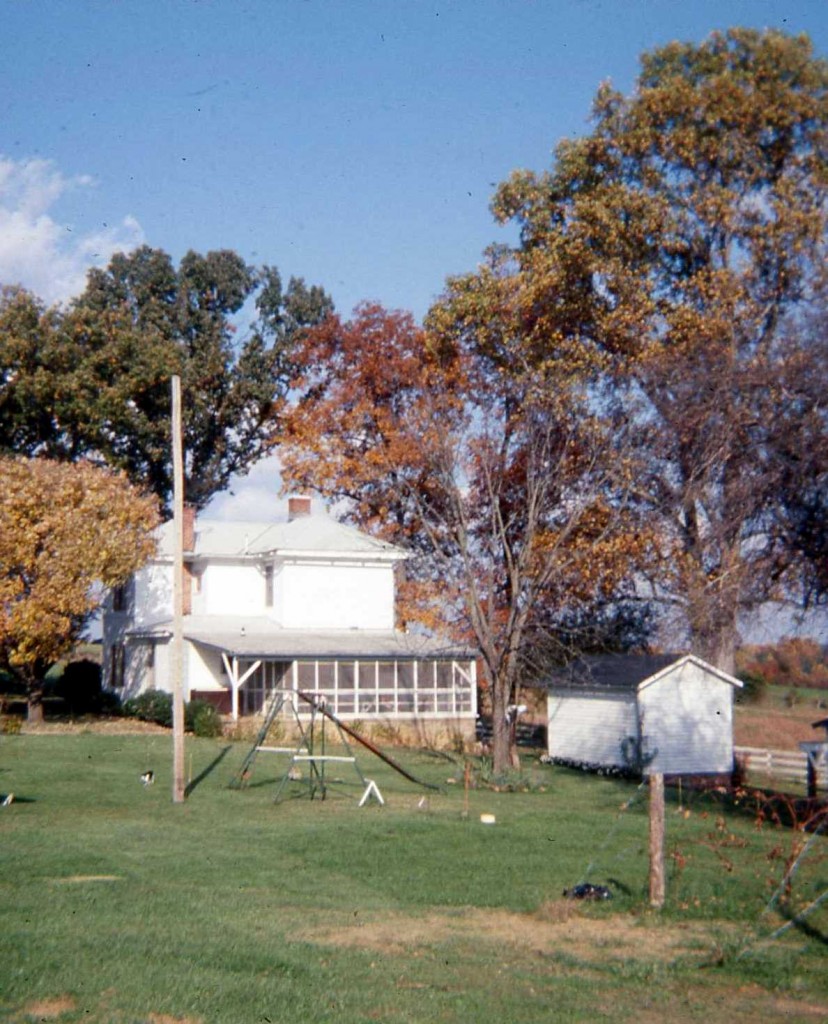
My mom was mostly a self-taught canner. Her parents lived for a number of years on Oak Ridge Farm in its heyday and later moved to Cabell Street in Lynchburg. My grandfather had a huge garden there which sustained the family through the depression years and beyond. My grandmother canned and everyone pitched in when it was time to put up food. My mother was the youngest of six though and doesn’t remember much about canning with her mother. Mom had three pressure canners – a Mirro one that was meant for meal-size pressure cooking and two 15.5-quart 7-jar Presto pressure canners. One belonged to my grandmother and the other Mom purchased. I still have both. They work just like they did 70 years ago (my grandmother’s was given to her by my uncle sometime around 1940). All we had to do to get hers in working order was purchase a new gasket, pressure gauge and weight. I helped can with Mom and learned the basics of packing and canning as well as pickling and freezing. I truly remember enjoying the entire process, especially when it came time to eat. Many nights in the summer we had meatless meals. My favorite summer meal – green beans with tomato and new potatoes, corn on the cob, and steamed squash. YUM!
When I moved out on my own and got married, I had a small garden in the city. I canned some then, under Mom’s tutelage and using the trusted Ball Canning Guide. Eventually because of the deer, groundhogs and other critters, along with the time commitment to growing children’s needs, I gave in and tilled that under for the last time.
This past summer I retired from teaching after 30 years and have begun to dabble in canning again. Why you might ask? There are a number of reasons. One, I am determined to help my family eat better food, with less preservatives and pesticides. Two, there is nothing which tastes better than home canned or frozen food right out of the garden. Grocery store mass produced foods just can’t cut it. And lastly, I like it. I get the deepest sense of satisfaction when the pressure has gone down to zero, I remove the jars and put them out on a towel to cool, and one by one I hear the “thwack” of the lid popping down to seal. Seeing the amassed collection of peaches, potatoes, tomatoes, tomato sauce, and green beans in my pantry shelves creates a certain fundamental sense of bliss…
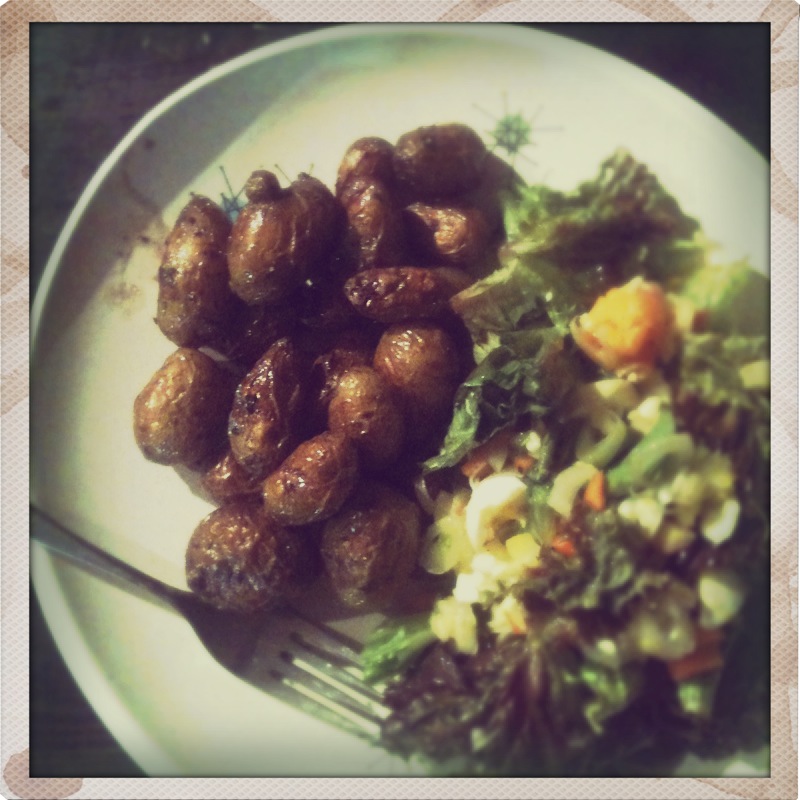 I suppose they look rather unassuming up there, piled on the plate next to a green salad. The list of ingredients is equally humble: potatoes, butter, salt, pepper, herbs-if-you-have-them-but-don’t-let-not-having-them-stop-you-from-making-these-for-dinner-tonight.
I suppose they look rather unassuming up there, piled on the plate next to a green salad. The list of ingredients is equally humble: potatoes, butter, salt, pepper, herbs-if-you-have-them-but-don’t-let-not-having-them-stop-you-from-making-these-for-dinner-tonight.
